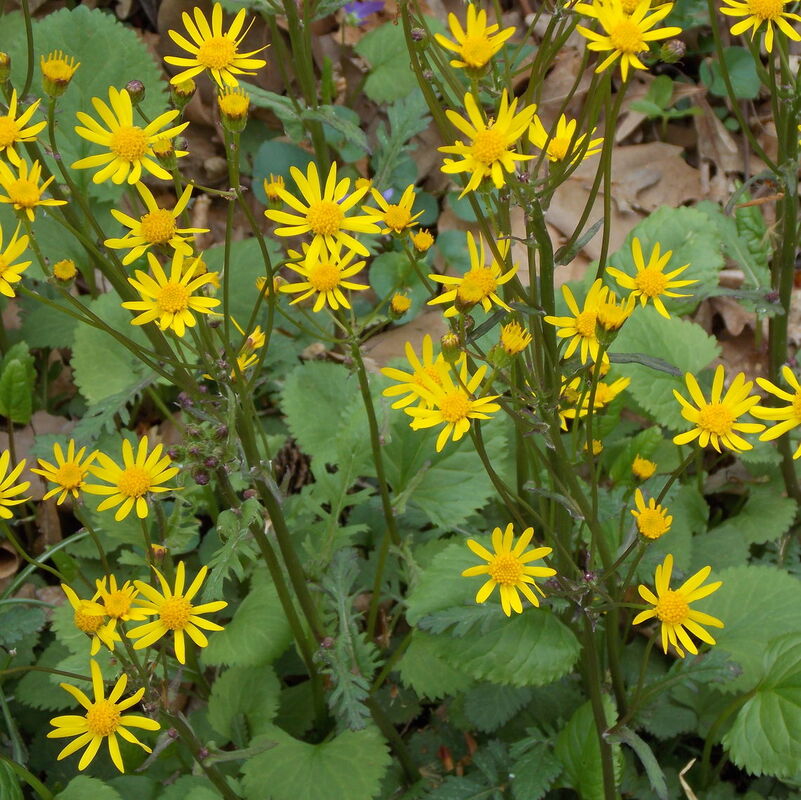Golden ragwort, a perennial in the aster family, is valued for its ability to thrive in moist or dry conditions, in both full sun or light shade, and produce flowers from mid- to late spring. This adaptable plant naturalizes rapidly, the foliage providing an excellent semi-evergreen ground cover for those tricky areas.
A typical golden ragwort plant stands 1-2’ tall. While the basal leaves grow larger, an attractive purple stem grows from the center of the plant. The small, almost fern-like leaves on the central stalk are dramatically different from the heart-shaped basal leaves. These are typically purple on the underside, providing a glossy contrast to the bright spring green on top.
Multiple flower heads create an airy spray of golden yellow floating above the leaves. Golden ragwort functions as a host plant for the threatened northern metalmark butterfly, and the nectar and pollen of the flowers attract a wide variety of pollinators
A welcoming stand of golden ragwort can be found blooming on the edge of the SBG’s Woodland Garden. Add some golden ragwort to your palette of plants and you’ll be guaranteed a splash of spring color!
Photo: Center for Sustainable Environment, fandm.edu


 RSS Feed
RSS Feed